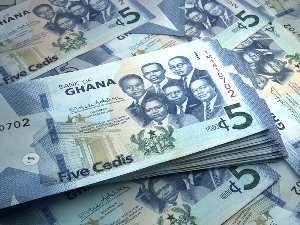Renewable energy is the way to go because everyone agrees that renewable energy could clean the air, stave off global warming, and help eliminate our nation's dependence on fossil fuels (a non renewable energy source). The renewable energy path is definitely what Ghana should be pursuing as a goal for the long term. Due to certain limitations, however, it is not very wise to shift our current focus from our non renewable path to the renewable path. In this vein, the energy plan by Nana Addo to pursue solar energy to meet our energy demand is not prudent because,
1. his plan did not consider the current constraints such as the current energy crisis, the huge investments already made by Ghana in our non renewable energy resources,
2. the timing is totally off because the solar technology has still not peaked
3. it is not a cost-effective approach for a poor nation like Ghana at the moment
Let me give a few facts about solar energy which is one of the leading technologies in renewable energy. Solar cells, also called photovoltaic (PV) by solar cell scientists, convert sunlight directly into electricity. Solar cells are often used to power calculators and watches. They are made of semi-conducting materials similar to those used in computer chips. When sunlight is absorbed by these materials, the solar energy knocks electrons loose from their atoms, allowing the electrons to flow through the material to produce electricity. This process of converting light (photons) to electricity (voltage) is called the photovoltaic (PV) effect.
Furthermore some new generations of power plants, with concentrating solar power systems, use the sun as a heat source to generate power. There are three main types of concentrating solar power systems: parabolic-trough, dish/engine, and power tower. For brevity of this article, I will not delve into the technical nuances of these technologies but will harp on a few pointers.
The demand for electricity is seldom constant over time. Many renewable resources — wind and solar power, for example — are intermittent, i.e., they are not available all of the time. Storing energy from the renewable source allows supply to more closely match demand. Although there are technologies for storing renewable energy such as batteries, compressed air, flywheels, pumped hydropower, super capacitors, super conducting magnetic energy, these technologies are not quite at the stage to help sustain the demands of a national grid.
In project management, you have to always work within your project constraints or else you will fail. The current general constraints for Ghana are our current energy shortages which must be met immediately but by cheaper methods, as well as make use of the investments already made into our non renewable energy sector like the energy plants, the gas pipeline, oil exploration, our refineries and many other assets.
Ghana has already made huge investments in the non-renewable energy sector like various energy plants built, oil exploration to help us use fossil fuels to generate energy, our refineries, the gas pipelines to enable us to distribute some of the energy discovered and tap into other sources from the sub-region and energy research and studies at universities such as KNUST. Thus it will be rather prudent to do our best to take full advantage of these resources to help us meet our current energy demands, which if not quickly dealt with can become a crisis as we just witnessed under the NPP. The wise thing to do is to make sure we get a return on our investments so we can gain enough capital to begin harnessing renewable energy.
As I previously stated, the solar technology is not cost effective at this time for a poor nation like Ghana. By 2015, under the Solar America Initiative (SAI), the goal of the U.S. Department of Energy Solar Energy Technologies Program is to reduce the average installed cost of all grid-tied PV systems to the end user to $3.30/watt (Wp), from a median value of $6.25/W in 2000. The result will be a reduction in the average cost of electricity generated by PV systems from a current $0.25/kWh to $0.09/kWh – a whopping 64% reduction in the cost!
The cost to sustain solar power for a national grid at this point does not make sense at all. We should therefore try our best to harness our non-renewable energy resources like fossil fuels to recoup the investments already made so we can have enough capital to invest in renewable energy sources like solar and wind energy to have a sensible energy portfolio. We need to work hard to gain maximum return on our current investments to enable Ghana to gain enough capital to delve into the realm of renewable energy. Pursuing Nana Akuffo Addo’s plan will rather force Ghana to borrow more money and keep the vicious cycle of poverty ongoing. The Mills plan is more pragmatic because it focuses on enhancing our current energy solutions to meet our energy demands and to cut down the cost for the user.
Pursing solar energy at this time will not be prudent since the technology needs some further tuning and tweaking to reduce its cost.
Email: kofiwebb@hotmail.com














